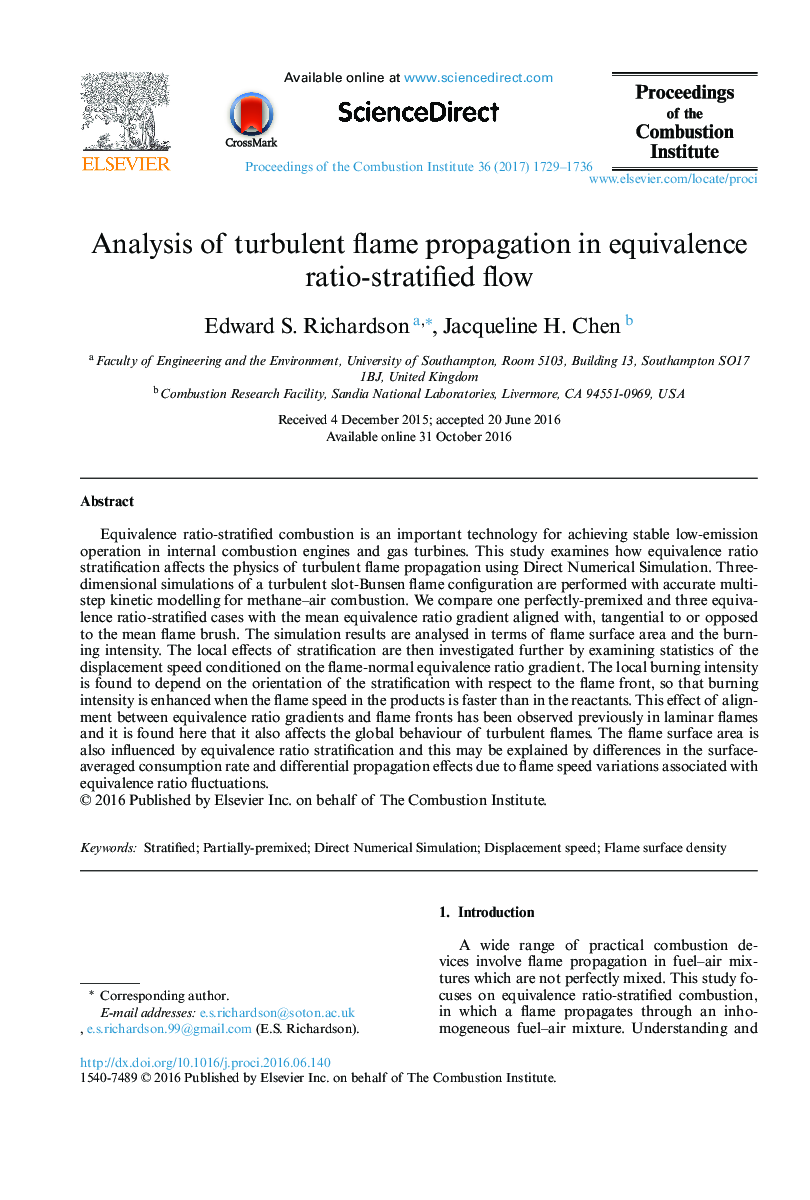| کد مقاله | کد نشریه | سال انتشار | مقاله انگلیسی | نسخه تمام متن |
|---|---|---|---|---|
| 6477999 | 1427916 | 2017 | 8 صفحه PDF | دانلود رایگان |
Equivalence ratio-stratified combustion is an important technology for achieving stable low-emission operation in internal combustion engines and gas turbines. This study examines how equivalence ratio stratification affects the physics of turbulent flame propagation using Direct Numerical Simulation. Three-dimensional simulations of a turbulent slot-Bunsen flame configuration are performed with accurate multi-step kinetic modelling for methane–air combustion. We compare one perfectly-premixed and three equivalence ratio-stratified cases with the mean equivalence ratio gradient aligned with, tangential to or opposed to the mean flame brush. The simulation results are analysed in terms of flame surface area and the burning intensity. The local effects of stratification are then investigated further by examining statistics of the displacement speed conditioned on the flame-normal equivalence ratio gradient. The local burning intensity is found to depend on the orientation of the stratification with respect to the flame front, so that burning intensity is enhanced when the flame speed in the products is faster than in the reactants. This effect of alignment between equivalence ratio gradients and flame fronts has been observed previously in laminar flames and it is found here that it also affects the global behaviour of turbulent flames. The flame surface area is also influenced by equivalence ratio stratification and this may be explained by differences in the surface-averaged consumption rate and differential propagation effects due to flame speed variations associated with equivalence ratio fluctuations.
Journal: Proceedings of the Combustion Institute - Volume 36, Issue 2, 2017, Pages 1729–1736
